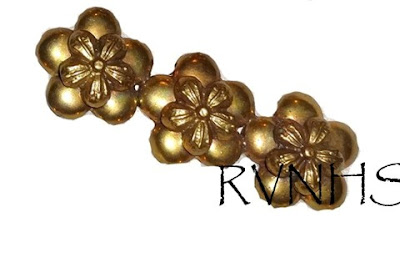We often come across instances where officer rank is
misidentified as belonging to either the Republic of Vietnam Air Force (VNAF)
or the Army of the Republic of Vietnam (ARVN). In some cases, it is impossible
to tell. One example being a metal gold-colored second lieutenant rank, which
would be equally appropriate for a member of the air force or army to wear.
However, in some cases there are differences, and it was with this in mind that
we decided to make a post explaining just three of the tell-tale signs that can
be encountered.
VNAF First Lieutenant colored cloth rank with black backing, RVNHS Archive.
ARVN First Lieutenant colored cloth rank with olive-drab green backing, RVNHS Archive.
First, while subdued cloth rank insignia invariably had a
black on olive-drab green scheme that for colored cloth officer rank was
different. VNAF officer colored rank on cloth had a black backing, while
ARVN officer colored on cloth was olive-drab green. Some examples can be found
in period photos of VNAF officers with colored cloth rank insignia with
olive-drab backing, but this was not standard practice, and photos of ARVN
officers with black backing on colored cloth rank insignia are not to be found.
Thus, officer colored cloth rank insignia with a black backing can be
distinguished as VNAF and not ARVN.
VNAF Captain metal and colored cloth ranks with blossoms arranged in a triangle,
RVNHS Archive.
VNAF Captains with triangular arranged blossoms
(colored cloth insignia - left, subdued cloth insignia - right), 1960s.
VNAF Colonel rank in triangular arrangement worn by Nguyen Huy Anh (center)
with General Tran Van Minh (left) and General Ngo Quang Truong (right).
ARVN Captain metal rank, RVNHS Archive.
ARVN Officers with three blossoms in a single row arrangement,
captain with metal rank (far left) and colonel with subdued cloth rank with blossoms in a vertical row (second from left), 1960s.
ARVN Colonel with three blossoms in single row arrangement,
horizontal (on cap) - vertical (on lapels), 1969.
Second, the arrangement for ranks with three blossoms
(captain and colonel) differed between VNAF and ARVN. For VNAF ranks, the three
blossoms were arranged into a triangle shape. For ARVN ranks, captain was
arranged in a single row of three blossoms, while colonel could either be a
single horizontal row or a single vertical row – both mounted atop the bar that
appeared on ranks from major to colonel. Some period photographs exist showing
VNAF captains with single-row style blossoms, but there were the exception, and
similar photos of ARVN captains with triangle-style blossoms do not appear.
VNAF Major metal rank, RVNHS Archive.
ARVN Major metal rank, RVNHS Archive.
Third, the lower bar appearing on officer ranks of major to
colonel from the mid-1960s, differed between VNAF and ARVN. The VNAF version of
the bar was silver with arrows pointed inward. The ARVN version was gold with a
branch with leaves and additional blossom(s) making up the design.
Example of a fake rank currently made in Vietnam for the tourist / collector market.
Aside from the inaccuracies with the manufacturing methods and material quality
that determine it as a forgery,
the triangle arrangement of the three blossoms is VNAF pattern, but the bar is ARVN pattern.




























